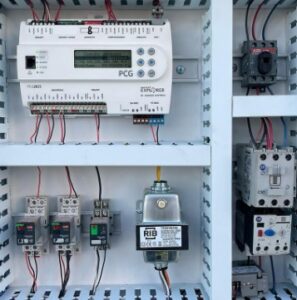A 144hz laptop display means that the screen can refresh the image it is displaying up to 144 times per second. This is faster than the standard 60 Hz refresh rate that is common on most laptop displays, which can result in a smoother, more fluid image.
Table of Contents
A 144hz laptop display means that the screen can refresh the image it is displaying up to 144 times per second. This is faster than the standard 60 Hz refresh rate that is common on most laptop displays, which can result in a smoother, more fluid image.
For gamers, a higher refresh rate can be beneficial as it can reduce the amount of stuttering, tearing, and ghosting that can occur on the screen. In games that are designed to run at high frame rates, a 144 Hz display will be able to display each frame more quickly and smoothly, resulting in a better gaming experience.
A higher refresh rate can also be beneficial for other applications such as video editing or even scrolling through documents and webpages.
It’s worth noting that for a 144Hz display to work on its full potential, the GPU should be able to run games at a high frame rate too, otherwise the difference in performance may not be as noticeable. Also, games should also be optimized to run at high frame rates, if not, the difference in performance may not be as noticeable.
In general, a 144 Hz display can provide a better visual experience, but it depends on the specific use case and whether the rest of the system is capable of taking advantage of it. If you’re primarily interested in gaming or content creation, then a 144 Hz display can be a good choice, but you should also consider other factors such as the resolution, color accuracy, and overall quality of the display when making your decision.
Does 144Hz affect battery life?
The refresh rate of a laptop display is a setting that controls how often the image on the screen is updated, higher refresh rates such as Hz Laptop require more processing power and energy which can affect the battery life.
A higher refresh rate such as 144Hz does consume more power than a standard 60Hz display. As a result, running a laptop with a 144Hz display at maximum refresh rate may reduce the battery life compared to running the same laptop with a 60Hz display.
Also, this could be affected by other factors such as the brightness level, performance settings, and running applications. Gaming, running heavy applications and multitasking tend to consume more power and can decrease battery life faster.
It’s worth noting that most laptops have a battery saver mode or power-saving options that allow you to reduce the refresh rate of the display to conserve power when running on battery, which can help extend the battery life.
If you’re concerned about battery life and you’re not planning to use your laptop for gaming or tasks that require high refresh rate, you can keep the refresh rate to 60Hz or lower to conserve power and extend your battery life. If you need to use the laptop for gaming or other tasks that require high refresh rates, you may have to sacrifice some battery life for improved performance.
Ultimately, it’s a trade-off between performance and battery life, and it will depend on how you plan to use your laptop, as well as your personal preferences.
Also Read: What is the most affordable and Reliable web hosting?
Which is better 60Hz or 144Hz in laptop?
A higher refresh rate such as 144Hz can result in a smoother, more fluid image, while a lower refresh rate such as 60Hz can result in a more stuttering image.
For gaming, a higher refresh rate like 144Hz can provide a better gaming experience as it can reduce stuttering, tearing, and ghosting. This can make for a smoother, more responsive, and more immersive gaming experience, especially for fast-paced games.
For other applications, such as video editing or scrolling through documents and webpages, a higher refresh rate can also be beneficial as it can make the visuals appear smoother and more fluid.
On the other hand, a 60Hz display is still sufficient for most general use cases, and it’s the standard refresh rate for most laptop displays, This refresh rate is fine for web browsing, video playback and basic productivity tasks.
It’s worth noting that for a 144Hz display to work on its full potential, the GPU should be able to run games at a high frame rate too, otherwise the difference in performance may not be as noticeable. Also, games should also be optimized to run at high frame rates, if not, the difference in performance may not be as noticeable.
It ultimately comes down to personal preference, the specific use case, and if you’re willing to sacrifice some battery life for improved performance. If you’re mainly using the laptop for general purpose like web browsing and video playback a 60Hz display will be sufficient, but if you’re into gaming or high performance tasks, a higher refresh rate like 144Hz will be better.





More Stories
What Makes Online Games So Addictive? A Friendly Guide to Fun, Friv Games, and More
Unlock Stunning Visuals with a High-Resolution AI Image Generator: The Future of Image Enhancement in 2025
What’s the Buzz About Instapro? A Friendly Guide to Using and Understanding It